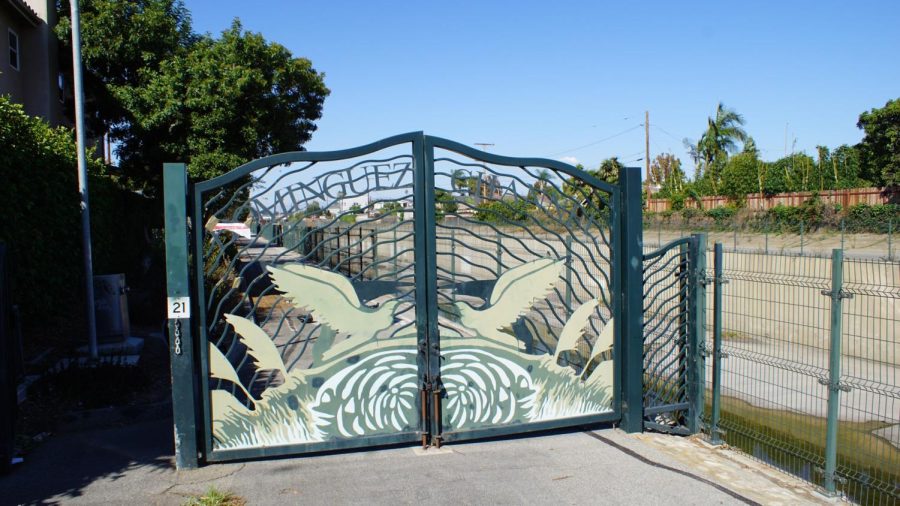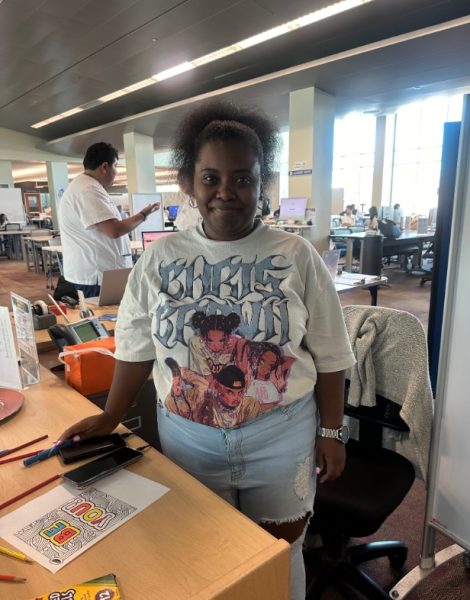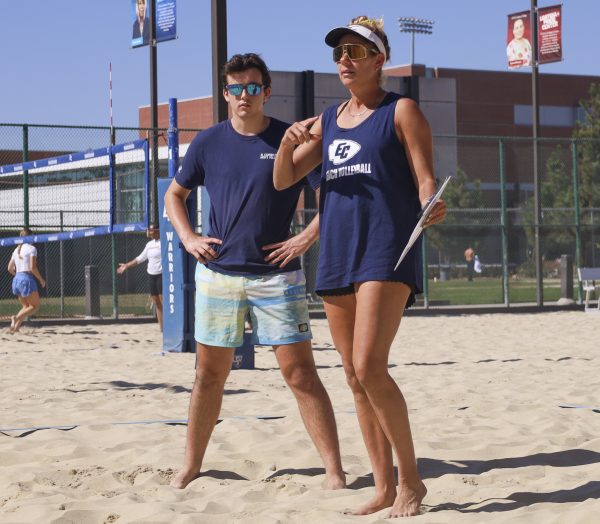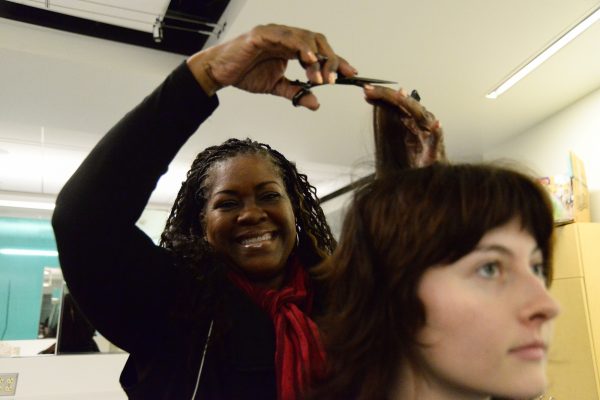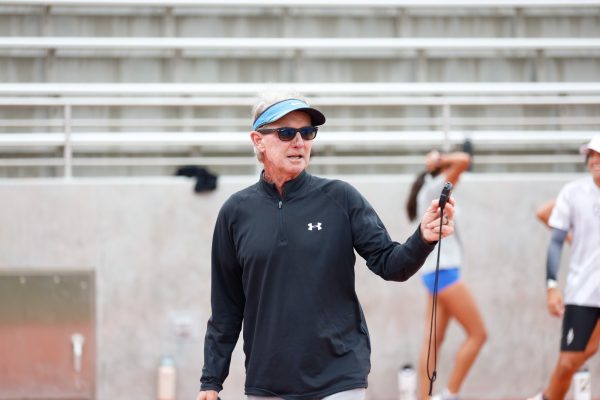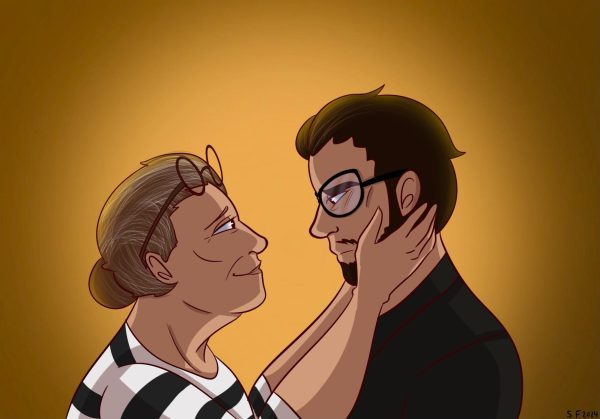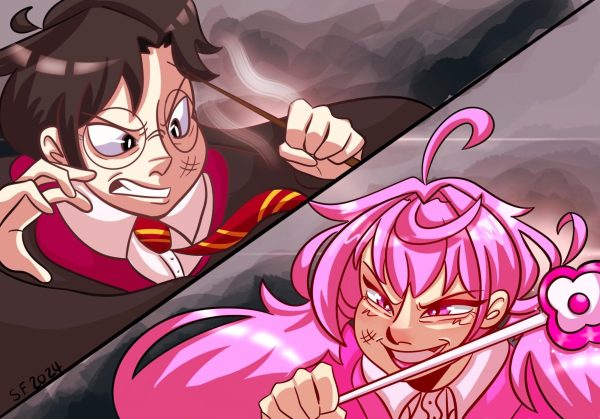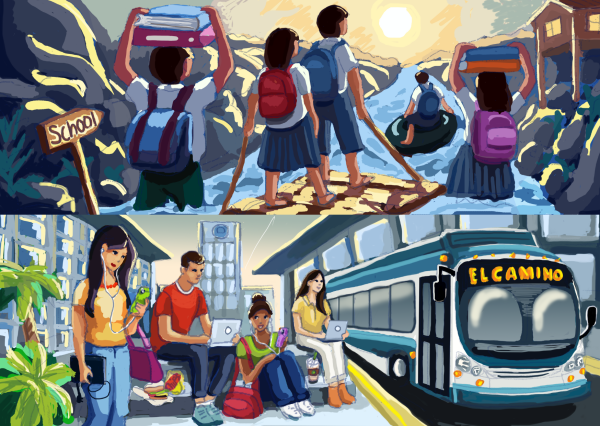A stream cries for help: Trapped in a grave of cement, Dominguez Channel struggles to survive
One of the entrances to Laguna Dominguez Trail, the bicycle path along Dominguez Channel, is on Manhattan Beach Boulevard near El Camino College and Alondra Park. Residents of the area use the path to exercise, though there has been a rise in homeless encampments. (Alexis Ramon Ponce | Warrior Life)
Quietly, but full of life, a creek emerges from underground in a tranquil neighborhood in Hawthorne, only to be encapsulated into a giant channel of cement that has trapped the body of water for decades. There are birds singing in the surroundings, they are flying free, which contrasts with the sound of the jailed stream known as Dominguez.
It flows from Hawthorne and travels free and almost natural through El Camino Village. The channel’s meandering trip continues through the iconic Alondra Park, Torrance, Gardena, Carson and Wilmington. It extends to the Port of Los Angeles in the San Pedro Bay area and finally touches the waters of the Pacific Ocean.
On South 117th Street, close where the creek starts its adventure, there’s a young couple: John and Melissa Gregorio, residents of the neighborhood. John has lived there since 1996 and he’s been witnessing the transformation of the environment of the little river ever since. Even though the place looks quiet, there’s a lot happening during the day, but most especially at night.
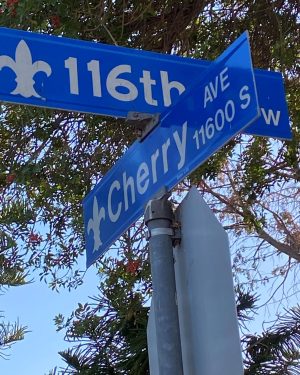
“The homeless population has increased in the area,” John Gregorio says.
With wire and a pair of pliers, he fixes a broken fence. Someone cut it the night before to get in or out of the restricted area where the creek is. He explains that before the COVID-19 pandemic they used to see kids near the stream, riding their bikes, walking, running, playing and exploring. However, that has changed because now, homeless people are the explorers.
Nevertheless, residents have to deal with another issue: bureaucracy. The creek is under Los Angeles County jurisdiction, but the neighborhood belongs to the city of Hawthorne, bordering on the city of Inglewood. When residents need to call authorities to report an issue related to the channel, the answer is always the same. “It’s not our jurisdiction.”
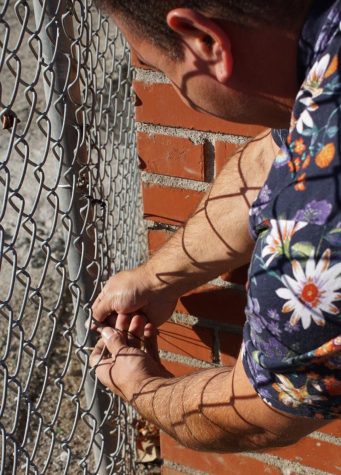
Dominguez Channel is like a poor relative everybody knows that exists, but many just try to ignore. The creek says hello to the southwestern part of El Camino College, crossing in silence under the institution’s Parking Lot F.
The 15.7-mile-long Dominguez Channel tells a tale. Not long ago, it had a diversity of fauna and native plants – some of which could only be found here. Moreover, there were many species of insects, mammals, birds, fish, mollusks and crustaceans. But, the fairytale is over and the creature is now caged and abated by tons of cement.
The saying goes, “Big problems demand drastic actions” and that is what was applied to this spot of nature to placate its wild and free impetus.
There were some floods and a few fires in the surrounding lands in the past. One of the fires occurred in 1941, before ECC was conceived as an institution and before L.A. County decided to change the image of the river forever.
“It is what it is,” Torrance resident Mark Smith says about the cement encasement of the creek.
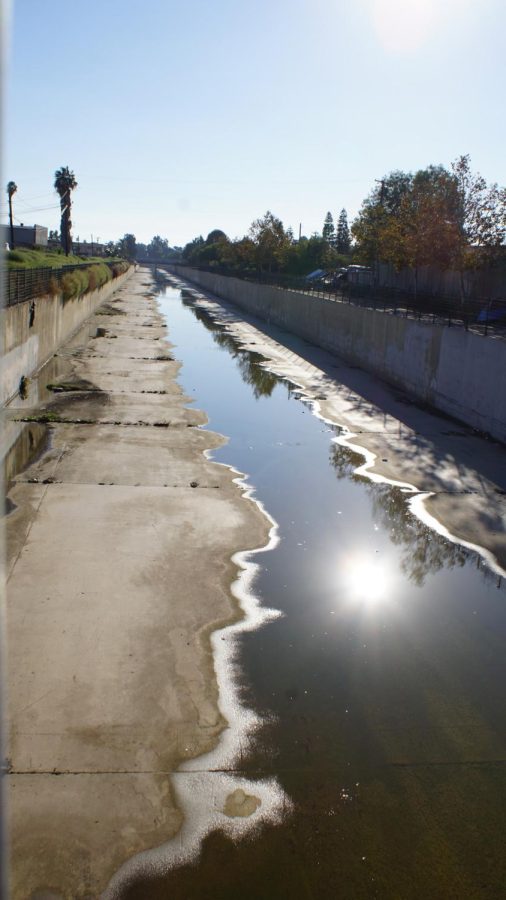
Smith is a man about 70 years old – he doesn’t like to say his age. He walks along the bike path above the channel, between Manhattan Beach Boulevard and West 154th Street with his black fox terrier dog.
“I used to come here every other day in the afternoons, but not anymore,” Smith says. “All the trash around and also all the weird people living on the trails might be dangerous. It’s not safe anymore, but it is what it is.”
Smith refers to homeless people living along the trail.
”It seems like it’s nobody’s problem,” Smith says. “It is what it is.”
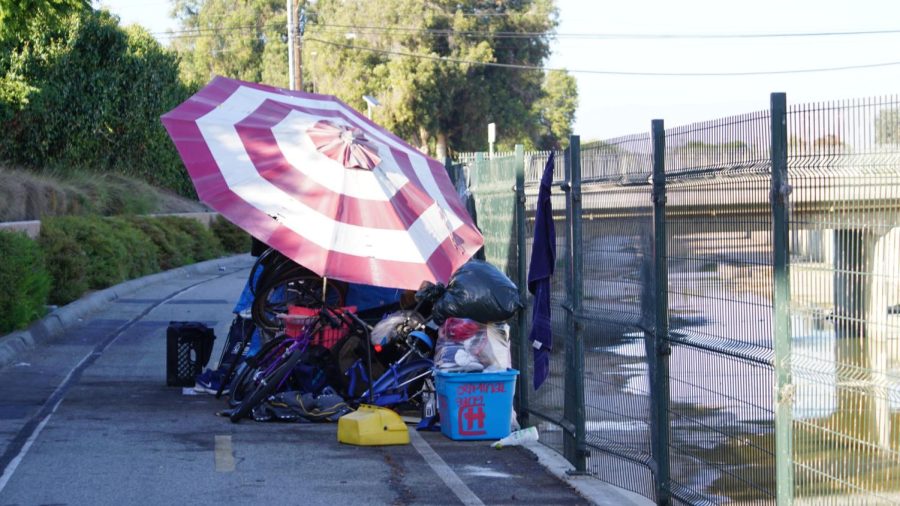
The creek’s watershed fate is uncertain. L.A. County’s Sanitation and Environment Department (LASAN) explains on its website that Dominguez Channel and other select waterbodies in its watershed, including the L.A. Harbor, are impaired by pollutants like trash, metals, bacteria and nutrients. This is mainly due to the watershed’s large, dense population and the amount of impervious ground surface that prevents large quantities of runoff from infiltrating into the soil.
In its trip along El Camino College and Alondra Park, Dominguez Channel passes close to another body of water: The Alondra Park Lake. Dominguez Channel’s close relative is like a lavish aunt who comes to visit and wears way too much perfume, and who always pinches your cheeks in greeting.
Everyday many visitors come: people, squirrels, ducks, geese, dogs, even coyotes and other species give the place a noisy, yet relaxing, environment to visit.
There’s a woman standing in the shallow part of Alondra Park Lake. She is dressed to work: blue jeans, a safety vest and tall black rubber boots. Her name is DeAna Vitela and she is a biologist.
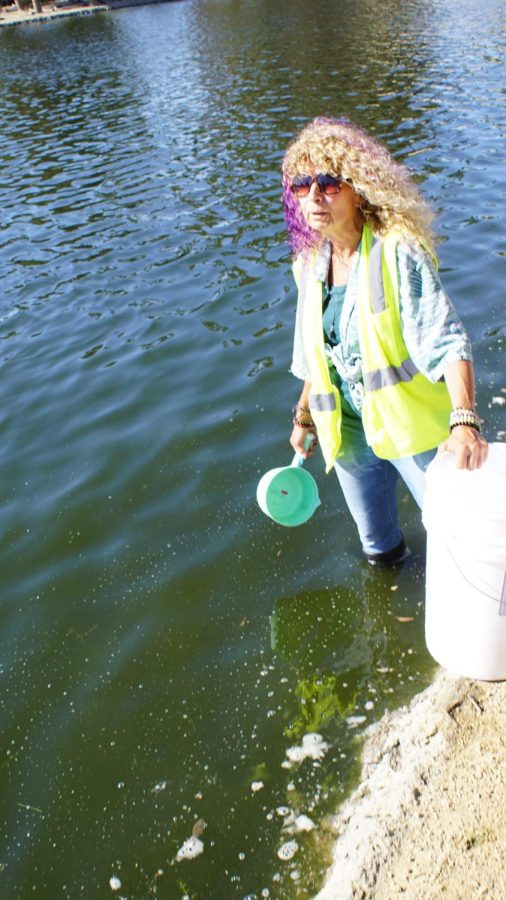
Vitela is the founder and CEO of Gardena-based AquaBio Environmental Technologies. “Helping nature heal itself” is AquaBio’s slogan and it has specialized in the applied science of bioremediation and biomimicry for industrial and municipal wastewater, among other services.
Vitela takes her job seriously. Slowly and quietly she’s taking samples of water to later take to a laboratory to identify the levels of nutrients, such as ammonia and other components.
She later takes measures to clean the lake, as well as other waterbodies in the South Bay. These samples are then sent to a laboratory where they are analyzed, and based on established parameters, determine the levels of bacteria, minerals and other components to prove the quality of the water.
In the worst-case scenario they proceed to apply the right measures to obtain optimal levels. The results and actions to be taken are shared with the L.A. County Parks and Recreation Department and LASAN.
While she is trying to get some samples of the algae and sediments, she says that the way they clean the lagoon is natural. They don’t use chemicals. Instead they use microorganisms.
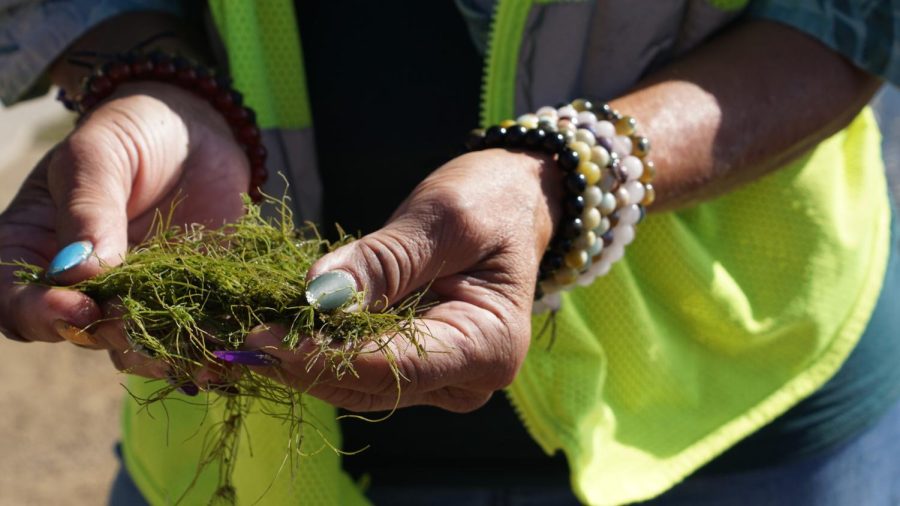
As a professor of the ecosystem, Vitela knows about the problems around Dominguez Channel all too well. The creek’s water doesn’t come to the lake, but the overflow of water from the lake goes to the channel. The proximity of both bodies of water is an issue because in the end, they are connected.
She emerges from the musty, smelly water and puts the pail in the back of a big white pick up truck, along with other tools and algae samples. She then cleans her hands with sanitizer, carefully cleaning her long, well-kept, painted nails. Every nail is painted a different vibrant color. She wears many bracelets made of semi-precious stones.
“For good energies,” Vitela says.
Since 1987, she has worked in the research, development and application of bio-nutrients to the environment, as well as non-pathogenic micro-organic degraders – those that don’t cause disease, harm or death to another organism.

Vitela has specialized in wastewater remediation using different forms of life like microorganisms to consume and break down pollutants, in order to clean up the environment. She has been involved in the process of the restoration of both fresh and marine water habitats and lake management. As a biologist, she also works cleaning retention basins, waste treatment facilities and aquaculture facilities.
“I have been investigating because [Dominguez Channel] is attached to some of the other sites that we manage. The channel does need help because it is a watershed in an urban area. All runoff goes into it. If the water is not treated, it accumulates over time and then all goes to the ocean,” Vitela says.
A flock of geese passes nearby, filling the air with their nasal honk. Then they go into the water.
“The channel,” she resumes, “needs us now.“
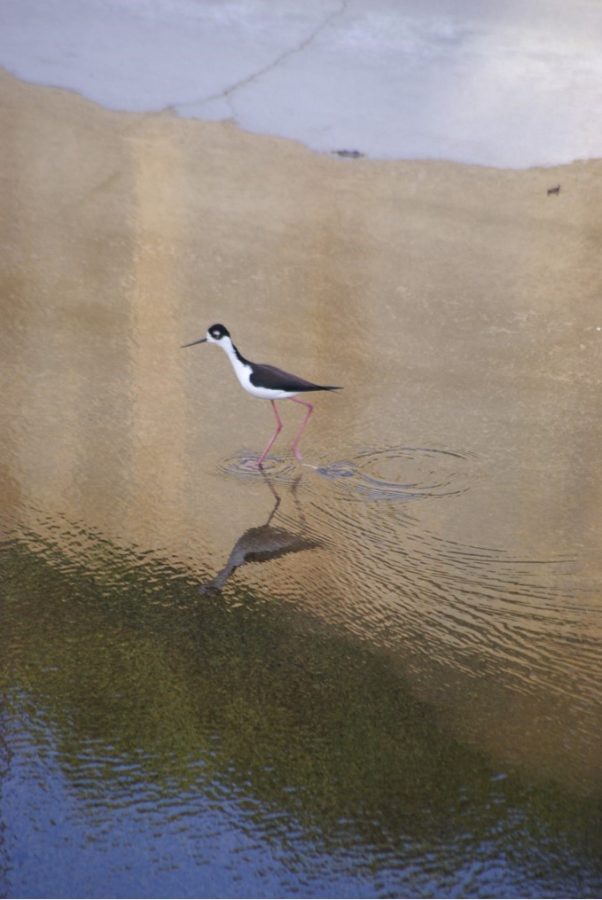
Vitela recalls an important incident. In October 2021, when the putrid water traveled through Dominguez Channel to Leeward Bay Marina in Wilmington, it released hydrogen sulfide into the air that killed fish and sickened people around the area.
“When they had the spill, I was contacted and I could talk to the city about that. I let them know some of the things we normally do [in cases like this], but they chose to put odorant and maybe some micros, but they never tested [the water] that I am aware of,” she says.
She takes a little moment to think.
“I gave them a list of testing to do and the cost to do it. I don’t know if they just cover the smell and let nature slowly handle it, instead of remediating it out of the system,” she says.

Back in 1952, after a severe flood and other incidents, like mosquito plagues and fires, L.A. County decided to build the 15.7-mile channel with concrete to encapsulate the river. The city faced another problem: the difficulty of developing more housing projects in the South Bay due to the wetlands. The problem was solved cosmetically, but it created another bigger issue: damage to the ecosystem and surrounding cities.
To this aggressive measure taken 70 years ago, Vitela’s opinion is that it was the worst thing they could have done; an unnecessary measure because there were more choices to solve the problem.
“Like meandering the watershed. Meaning that instead [of] the creek [going] in a straight line to the ocean, we create a snake shape. The more meander it gets, the longer the river has the chance for the pollution to settle,” she says.
During this process the polluted water would be downgraded slower in its trip to the ocean.
“It is even more important to talk about trees, plants and bushes to have a balance in the environment. Nonetheless, by transforming a healthy creek into a cemented, dead, unaesthetic channel, [L.A. County] destroyed the stabilization of the land,” Vitela says. “When it rains, the runoff is so drastic with all of the nutrients going directly into the bay and of course, this changes ocean life.”
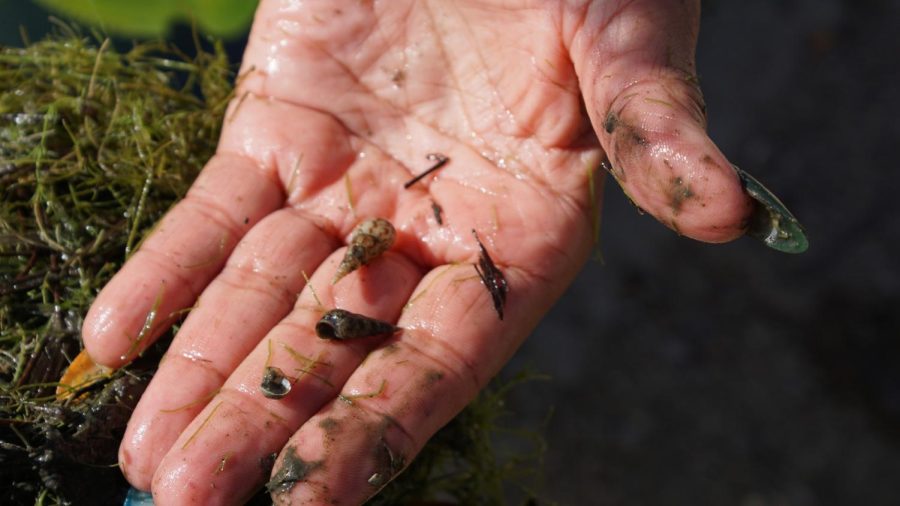
The afternoon wind blows. Vitela takes a deep breath and tries to fix her thick, curly hair with her hands.
“I brush my hair all the time, but not today,” she says ruefully.
A duck in the park is calling and other ducks do the same. Vitela looks in the direction of Dominguez Channel through her sunglasses and retouches her hair once more. She looks at a big tree and follows the branches that play with the wind.
Vitela is optimistic about the present and the future of the channel.
“There is still hope to save the creek,” she says. “[L.A. County] can surely help the river by allowing plants to grow and not try to kill it. Let the ecosystem take over. Plants can do it better in soil stabilization. Besides, those plants are great for pollution control and an excellent food source for the animals. They don’t necessarily have to be inside of the water, but in the hillsides.”
The biologist explains that the procedure is something that has been done in other bodies of water before, like the Los Angeles River and Machado Lake in Harbor City.
Rehabilitating and restoration of rivers and lakes is not a new matter. Another example of restoration is Ballona Creek, primarily in Culver City and Marina Del Rey, which is being reforested along with its estuary and marsh.

Vitela believes that everyone can help, not only Dominguez Channel, but all the environment.
“In a multicultural city, we can do something relevant,” she says.
In order to do so the key is fifth graders because those kids are focused. They are concerned about the environment and what they learn. They take it home and instruct their families to change little ways, she says. Fifth graders can motivate families to take action that will yield great exponential results.
To protect the channel immediately and have long lasting results, Vitela encourages everyone to be involved in picking up garbage. She explains that there are groups of volunteers that clean the walkways around the lake and the park.
“Some fishermen, as well, clean the wires from the fishing lines out of the water, so those wires don’t hurt birds. We need more people like them,” she says.
“Both schools and the media need to do more to educate and raise awareness about respecting nature. They are not doing enough,” she says. “If everybody can help a little bit, maybe just a tiny bit, like picking up trash can make a big difference, or just go ahead and pick up your trash.”
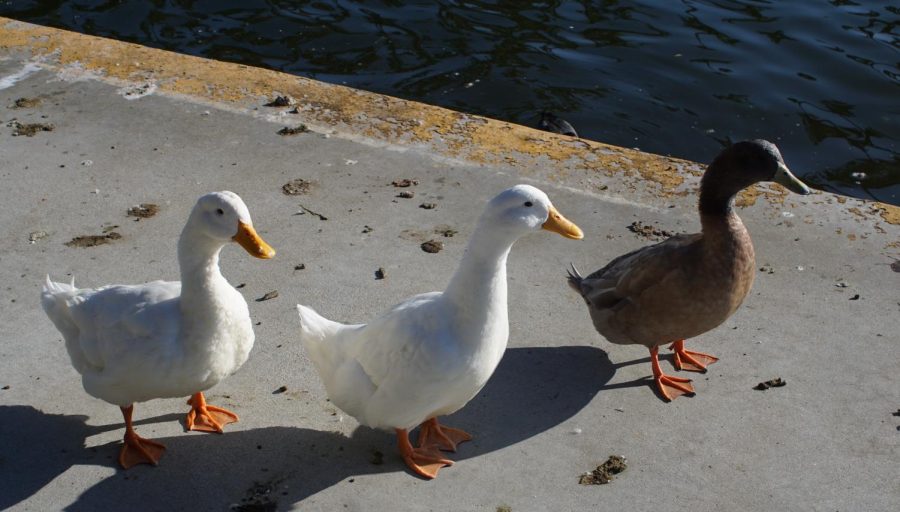
In this matter, Vitela’s opinion is that ECC can help with the problem in the trails along Dominguez Channel by having campaigns among the students to help L.A. County clean the paths and teach people ways to maintain the trail.
On the other hand, ECC does not currently have a program for students and faculty to contribute by helping the environment around its perimeter, according to Amy Grant, dean of ECC Natural Sciences.
Talking about Dominguez Channel’s past, present and future, Grant doesn’t have much information and declined to state a position. She explains that the focus is not on how to care for the environment. They don’t have those classes, she explains.
Before Vitela goes back to work in the lake’s water she pauses.
“Even though some people want to deny it, this is an issue. Changes in the climate are real. They are here.”
She refers to warmer winters, long droughts, hurricanes and wildfires that continue to affect the population of this planet.
“Mother Nature took care of us. Now is the time that we take care of Grandmother Nature,” she says.
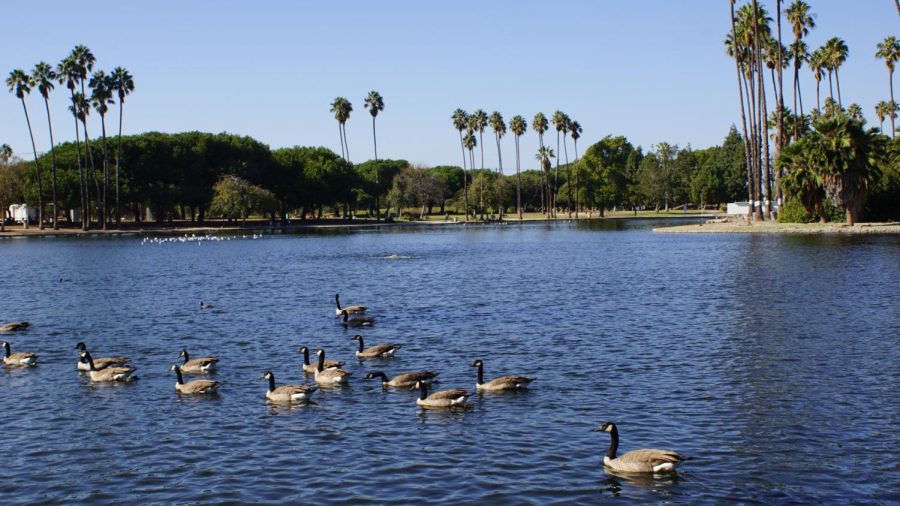
Editor’s Notes:
- Orientation of photos was corrected on Monday, June 5.
- Headline was updated, photos were enlarged and alignment of photos was changed for better placement on Sunday, June 11.



